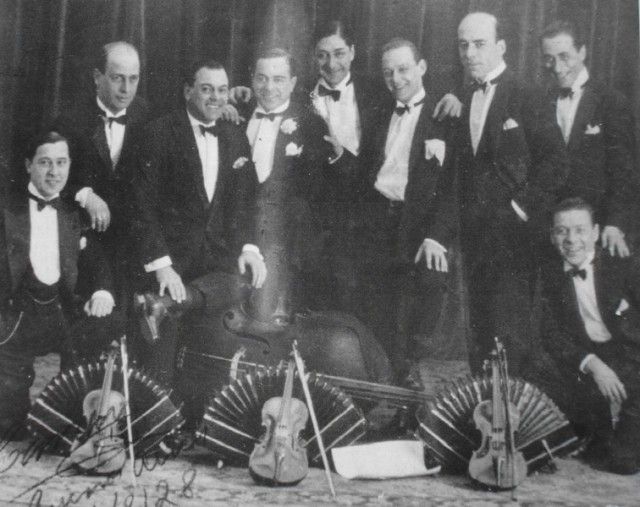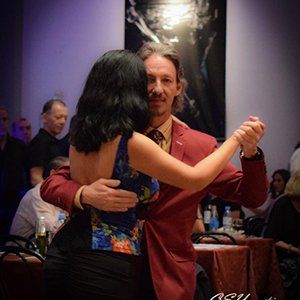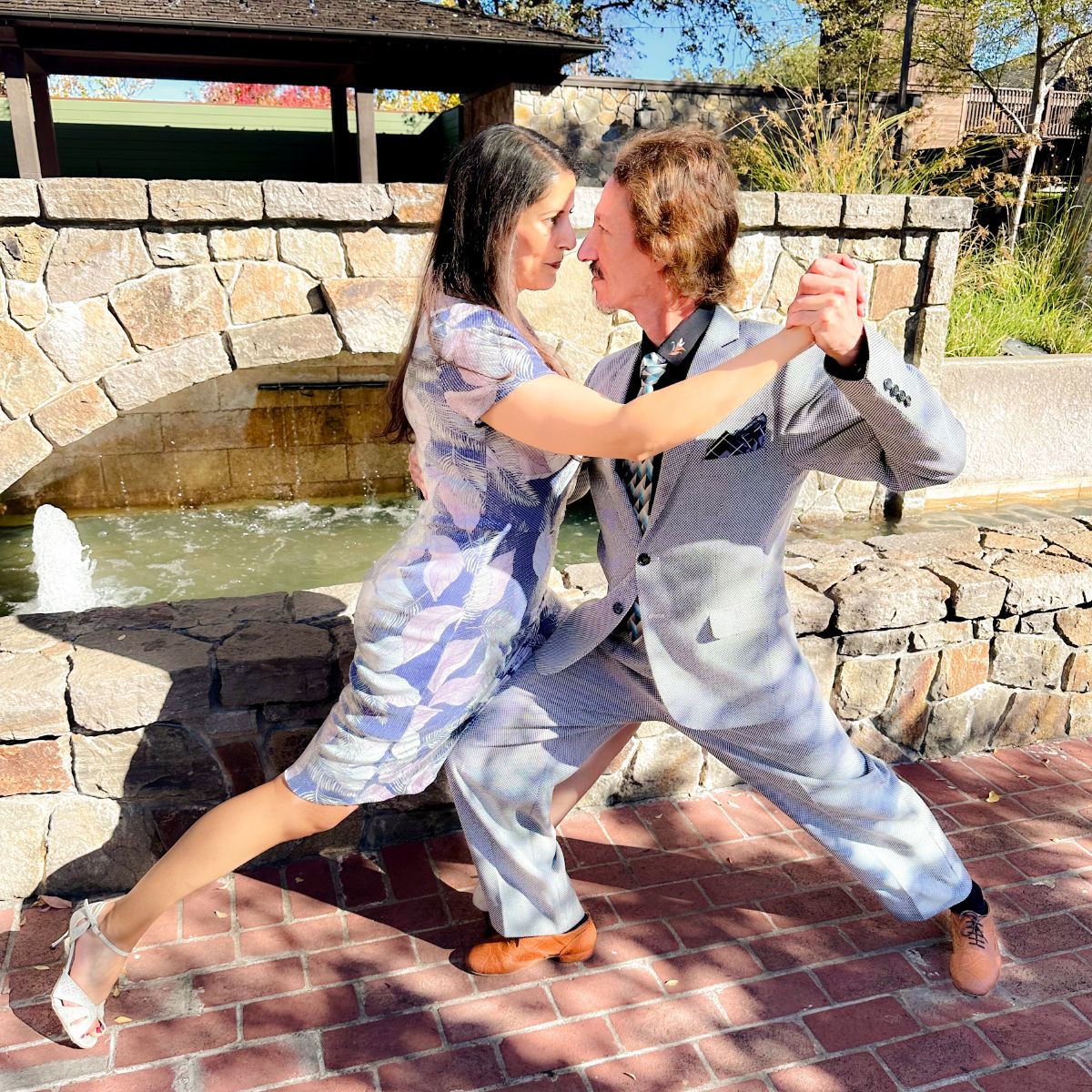 When in an embrace with our partner, we find ourselves (in the beginning) in an unfamiliar situation.
When in an embrace with our partner, we find ourselves (in the beginning) in an unfamiliar situation.
Having a bigger, conjoined body, with four legs, with different levels of sensitivity among its duplicated parts, but demanding equal amounts of awareness in relation to them.
This is a situation that requires committed and engaged preparation, and lots of practice to be able to, first, become familiar with it, and then, fundamentally, to be able to poeticize it, to make an Art of what, otherwise, is a primordial nature call – the pleasure of being embraced by another human being.
This new body, which we freely agree to conform to, challenges us to abandon the comfortable, mundane refuge of our egos, demanding that we become something else that is not our “self”, but the couple dancing Tango on the dance floor at a good milonga.
This is a very freeing outcome of practicing the dance of Tango, a sense of liberation that can sometimes be disturbing, nevertheless enlightening.
There is a profound wisdom in the ability to dance Tango.
There is a profound wisdom in the ability to dance Tango. A wisdom that you acquire through training, by working on the way you hold your body, the way you move, paying precise attention to detail, developing a sense of awareness and careful respect in dealings with others at milongas, learning to passionately love the music that milongueros dance to, opening yourself up to music that expertly advises you on how to move in every beat.
This wisdom does not stop there. Milongueros, who have been dancing Tango for decades at the best milongas, who are all in Buenos Aires, who have been developing a familiarity with other milongueros, most of them older, listening to them, taking their advice, learning from them, developing a wisdom, a knowledge, which is at the very least hard, if not impossible, and would ultimately not make sense to explain in words.
It is in the dance of a milonguero where you will find his or her wisdom.
It is in the dance of a milonguero where you will find his or her wisdom. To learn to dance Tango, which is to learn all about Tango, is an unspeakable enterprise, in which words act mainly as signs that point you in the direction of what you need to see or feel.
Dancing embraced by a milonguero is where learning Tango begins. The rest is a preamble to it. That is how Tango reached our time in history, communicated from person to person through the embrace of brothers, sisters, cousins, uncles, aunts, fathers and mothers, grandparents and friends, in homes, at practicas in neighborhood clubs, where experienced dancers danced with and gave instruction and advice to newer ones.
Today, in accordance with the modalities of our present time, private lessons are the only effective way to learn to dance Tango.
Today, in accordance with the modalities of our present time, private lessons are the only effective way to learn to dance Tango, on a regular basis, at least once a week, the more the better. In group classes you learn and train the social aspects of Tango, the “códigos” of the milongas, to move among other couples on the dance floor, practice useful exercises, make friends and start to integrate yourself in the society of Tango. However, not everybody has the same goals regarding Tango, and this is something to keep in mind about group classes.
If your goal is to dance Tango, to become a milonguera or milonguero, private lessons is a must. Even for a leader, learning to lead from another leader is essential.
 Francisco Canaro
Francisco Canaro









